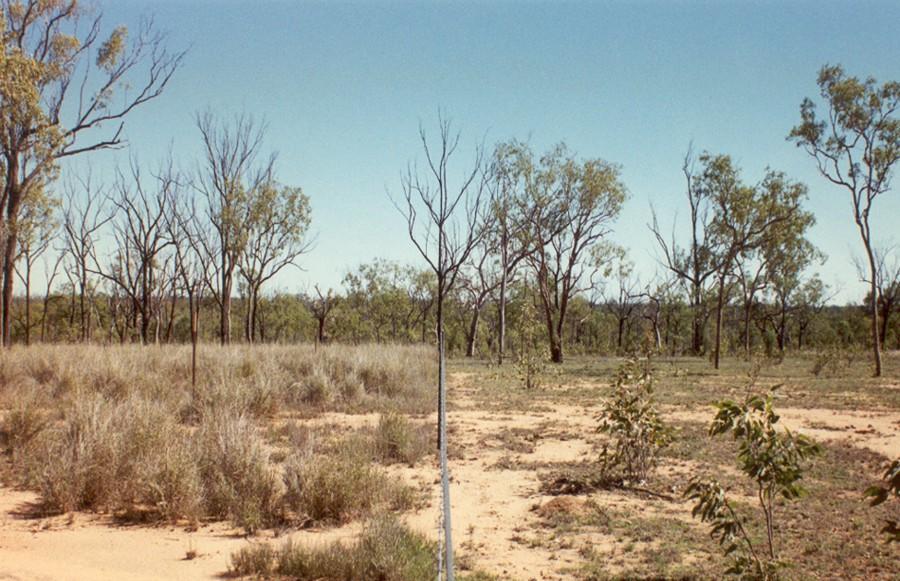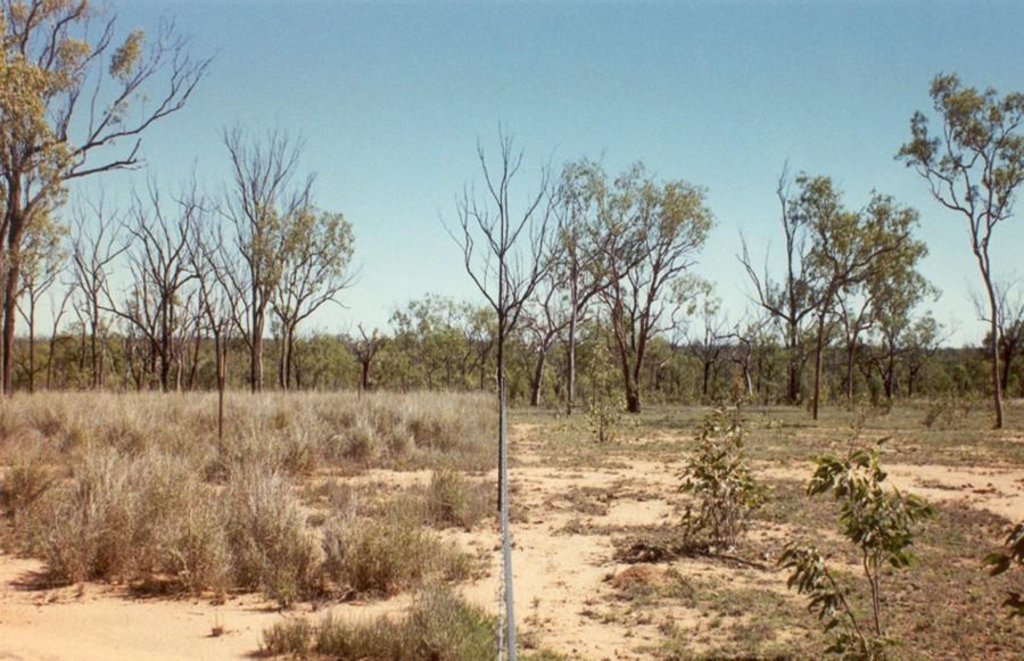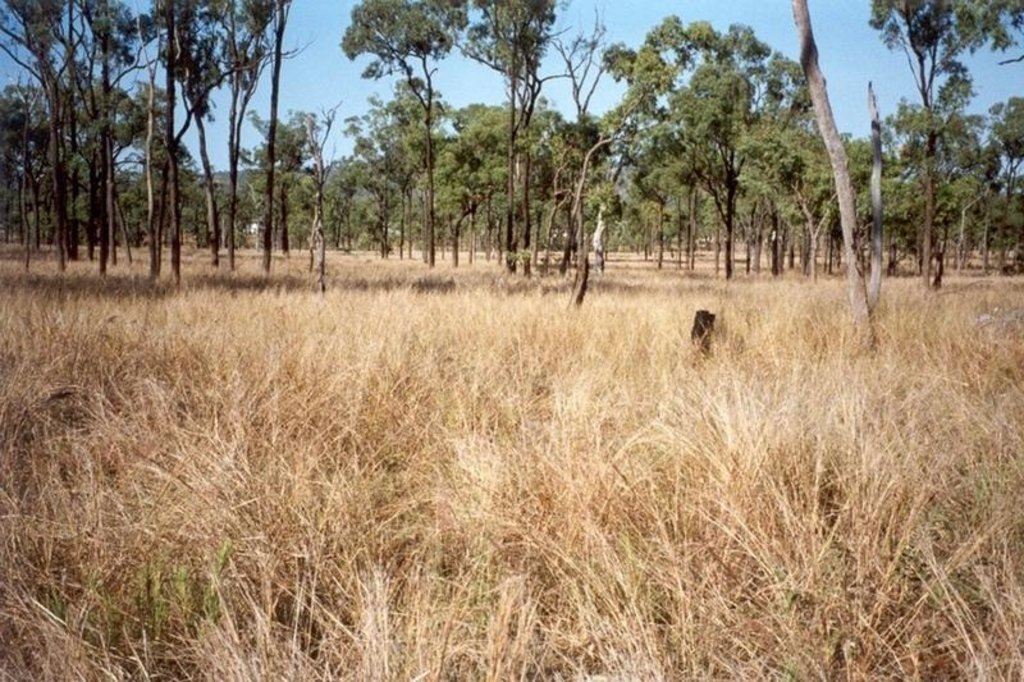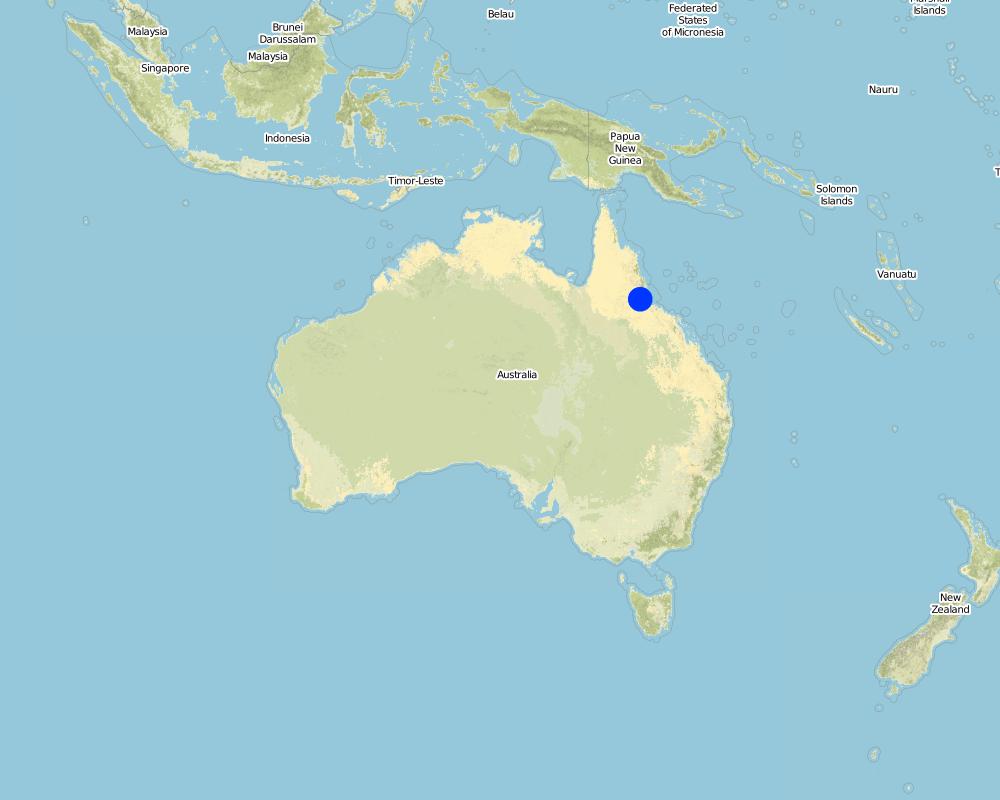Ecograze [Austrália]
- Criação:
- Atualização:
- Compilador/a: Andrew Ash
- Editor: –
- Revisores: Fabian Ottiger, Alexandra Gavilano
technologies_1332 - Austrália
Veja as seções
Expandir tudo Recolher tudo1. Informação geral
1.2 Detalhes do contato das pessoas capacitadas e instituições envolvidas na avaliação e documentação da tecnologia
Nome do projeto que facilitou a documentação/avaliação da Tecnologia (se relevante)
Book project: where the land is greener - Case Studies and Analysis of Soil and Water Conservation Initiatives Worldwide (where the land is greener)Nome da(s) instituição(ões) que facilitou(ram) a documentação/ avaliação da Tecnologia (se relevante)
CSIRO (CSIRO) - Austrália1.3 Condições em relação ao uso da informação documentada através de WOCAT
O/a compilador/a e a(s) pessoa(s) capacitada(s) aceitam as condições relativas ao uso de dados documentados através da WOCAT:
Sim
1.4 Declaração de sustentabilidade da tecnologia descrita
A tecnologia descrita aqui é problemática em relação a degradação da terra de forma que não pode ser declarada uma tecnologia de gestão sustentável de terra?
Não
1.5 Referência ao(s) questionário(s) sobre abordagens GST (documentado(s) usando WOCAT)
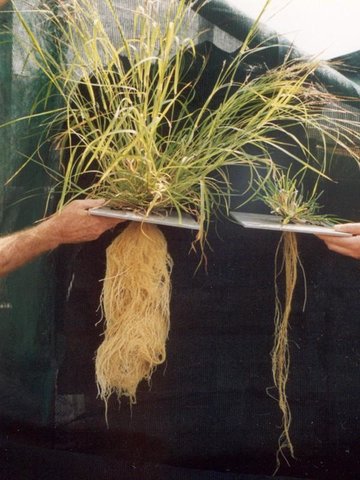
Development and promotion of Ecograze [Austrália]
Research-based development and promotion of Ecograze principles and practices through on-farm testing and demonstration.
- Compilador/a: Andrew Ash
2. Descrição da tecnologia de GST
2.1 Descrição curta da tecnologia
Definição da tecnologia:
An ecologically sound and practical grazing management system, based on rotation and wet season resting.
2.2 Descrição detalhada da tecnologia
Descrição:
Open eucalypt woodlands cover approximately 15 million hectares in the semi-arid plains of north-east Australia, and support about a million head of cattle. Keeping these grazing lands productive and healthy demands good management, and getting the right balance between stock numbers and the forage resource is a considerable challenge.
Land in good condition has a healthy coverage of so-called ‘3P grasses’: native perennial, productive and palatable grasses, important to cattle and to the health of the landscape. Less palatable plants include annual grasses, native and exotic forbs and shrubs. The heterogeneity of the pasture resource results in uneven utilisation, and thus overgrazing in parts.
In order to prevent pastures in good condition from degrading, or to restore/improve deteriorated pastures, utilisation needs to be adjusted according to climate and the state of the ‘3P grasses’. In practice, the only means of manipulating pasture composition over large areas are grazing, resting from grazing, and burning.
The flexible Ecograze system includes wet season resting, and is based on the establishment of three paddocks with two herds within a rotational system. The key is that all paddocks get some wet season rest two years out of three. Wet season rests are divided into two phases: (1) The early wet season rest starts after the first rains in November/December and continues for 6-8 weeks, it is particularly good for perennial grass recovery; (2) the late wet season rest lasts until March/April and aids both seed set and vegetative recovery.
Average paddocks of around 3,000 ha in size are sub-divided into three relatively equal sizes, though some flexibility is required to balance variation in the productive capacity of different land types within the paddock. The paddocks are fenced and extra water points through polythene piping and additional water troughs, and where required, pumps are established. The return on investment can be realised within a few years.
The main management challenges are: (1) the timing and length of the early wet season rest, which depends on how effectively the early rains promote vegetative growth of perennial grasses, and (2) the movement of animals during the wet season. The number of stock movements are fixed - but the timing is flexible and should be responsive to the situation: the challenge is to learn to assess the pasture condition, read the situation, and schedule the timing and length of the rest period accordingly. The main criterion is the recovery state of perennial grasses.
2.3 Fotos da tecnologia
2.5 País/região/locais onde a tecnologia foi aplicada e que estão cobertos nesta avaliação
País:
Austrália
Região/Estado/Província:
Queensland
Especificação adicional de localização:
North-eastern Queensland
Especifique a difusão da tecnologia:
- Uniformemente difundida numa área
Se a Tecnologia estiver uniformemente distribuída por uma área, especifique a área coberta (em km2):
10,0
Se a área precisa não for conhecida, indicar a área aproximada coberta:
- 10-100 km2
Comentários:
Total area covered by the SLM Technology is 10 m2.
study terminated after 8 years (2000-2001).
The paddocks of an average size of around 30 km2 are subdivided into three paddocks of an average size of 10 km2. The technology is therefore documented on one of the subdivided paddocks. The 10 km2 is the area per subdivided paddock, each farm (localities) has 10 km2 (respectively 3*10km2) area, where the technology is applied.
Map
×2.6 Data da implementação
Caso o ano exato seja desconhecido, indique a data aproximada:
- menos de 10 anos atrás (recentemente)
2.7 Introdução da tecnologia
Especifique como a tecnologia foi introduzida:
- durante experiências/ pesquisa
Comentários (tipos de projeto, etc.):
Meat and Livestock Australia initiated the project to improve the understanding of the effects of grazing, spelling, fire and climate on the condition and productivity of open eucalyptus woodlands in north-eastern Queensland.
3. Classificação da tecnologia de GST
3.1 Principal/principais finalidade(s) da tecnologia
- Reduz, previne, recupera a degradação do solo
3.2 Tipo(s) atualizado(s) de uso da terra onde a tecnologia foi aplicada

Pastagem
Pastagem extensiva:
- Fazenda pecuária
- Cattle
Comentários:
Major land use problems (compiler’s opinion): Over the last 20 years there has been a decline in the condition of grazing lands in north-east Australia. The evidence is a decline of palatable, perennial, productive grasses (‘3P grasses’), reduced ground cover and an increase in sediment and nutrient movement into streams. As a consequence of economic pressures and over-optimistic expectations of good rains, stocking rates have often been too high.
Major land use problems (land users’ perception): same as above (combined)
Ranching: Yes
3.4 Abastecimento de água
Abastecimento de água para a terra na qual a tecnologia é aplicada:
- Precipitação natural
3.5 Grupo de GST ao qual pertence a tecnologia
- sistema rotativo (rotação de culturas, pousios, cultivo itinerante)
- Gestão de pastoralismo e pastagem
3.6 Medidas de GST contendo a tecnologia

Medidas de gestão
- M2: Mudança de gestão/nível de intensidade
Comentários:
Main measures: vegetative measures, management measures
Type of vegetative measures: scattered / dispersed
3.7 Principais tipos de degradação da terra abordados pela tecnologia

Erosão do solo pela água
- Wt: Perda do solo superficial/erosão de superfície
- Wg: Erosão por ravinas/ravinamento
- Wo: efeitos de degradação externa

Deteriorização física do solo
- Pc: Compactação
- Pk: quebra e ressecamento

Degradação biológica
- Bc: redução da cobertura vegetal
- Bs: Qualidade e composição de espécies/declínio de diversidade
Comentários:
Main type of degradation addressed: Wt: loss of topsoil / surface erosion, Wg: gully erosion / gullying, Wo: offsite degradation effects, Pc: compaction, Pk: sealing and crusting, Bc: reduction of vegetation cover, Bs: quality and species composition /diversity decline
3.8 Redução, prevenção ou recuperação da degradação do solo
Especifique o objetivo da tecnologia em relação a degradação da terra:
- Reduzir a degradação do solo
4. Especificações técnicas, implementação de atividades, entradas e custos
4.1 Desenho técnico da tecnologia
Especificações técnicas (relacionada ao desenho técnico):
The drawing refers to the ‘two herd/three paddock Ecograze system’. Paddock A is rested in the early wet season, while Paddocks B and C are grazed. Paddock B is then rested for the late wet season while Paddocks A and C are razed. Paddock C is then rested for the dry season and the next early wet season while Paddocks A and B are grazed. Paddock A is then rested for the late wet season and the rotational cycle continues in this fashion for the three years of the full rotation. Early wet season spelling should commence after the first significant rains in November/December and should continue for 6-8 weeks, depending on how effectively the early rains promote vegetative growth of perennial grasses. Late wet season rest typically last until March/April, depending on length of growing season.
Technical knowledge required for field staff / advisors: moderate; Technical knowledge required for land users: moderate
Main technical functions: improvement of ground cover, increase in organic matter, increase / maintain water stored in soil, improvement of soil structure
Secondary technical functions: control of concentrated runoff: retain / trap, increase in soil fertility
Scattered / dispersed
Vegetative material: G : grass
Grass species: 3P grasses (native perennial, productive and palatable grasses)
Change of land use practices / intensity level: rotational system, timing and length of resting period, timing of animal movement
Control / change of species composition: grazing, (wet season) resting from grazing and burning
Autor:
Mats Gurtner
4.2 Informação geral em relação ao cálculo de entradas e custos
Especifique como custos e entradas foram calculados:
- por área de tecnologia
Indique o tamanho e a unidade de área:
1 ha
Especifique a moeda utilizada para os cálculos de custo:
- USD
4.3 Atividades de implantação
| Atividade | Periodicidade (estação do ano) | |
|---|---|---|
| 1. | Paddocks first need to be surveyed to understand the various plant communities and soils | |
| 2. | Paddocks first need to be surveyed to understand the various plant communities and soils. | |
| 3. | Based on the survey and location of water points, and the most practical location for fences, a paddock design is developed: paddocks are subdivided into relatively equal sizes. | |
| 4. | Fencing the paddocks Material: metal barbed wire or plain wire for electric fences, steel fence posts, wooden or steel end assemblies (poles) to strain the fence, energisers (for electric fences). | |
| 5. | Provision of extra water points through polythene piping and additional water troughs - and where required, pumps. |
4.4 Custos e entradas necessárias para a implantação
| Especifique a entrada | Unidade | Quantidade | Custos por unidade | Custos totais por entrada | % dos custos arcados pelos usuários da terra | |
|---|---|---|---|---|---|---|
| Mão-de-obra | Labour | ha | 1,0 | 4,0 | 4,0 | 100,0 |
| Equipamento | Tools | ha | 1,0 | |||
| Material de construção | others (specify): metal, wire, wood | ha | 1,0 | 6,0 | 6,0 | 80,0 |
| Custos totais para a implantação da tecnologia | 10,0 | |||||
| Custos totais para o estabelecimento da Tecnologia em USD | 10,0 | |||||
Comentários:
Duration of establishment phase: 48 month(s)
4.5 Atividades recorrentes/manutenção
| Atividade | Periodicidade/frequência | |
|---|---|---|
| 1. | Monitoring pastures and soils | |
| 2. | Mustering (gathering) and shifting (moving) livestock | |
| 3. | Monitoring pastures and soils. | |
| 4. | Repair fences (wire, poles, etc) |
4.6 Custos e entradas necessárias pata a manutenção/atividades recorrentes (por ano)
| Especifique a entrada | Unidade | Quantidade | Custos por unidade | Custos totais por entrada | % dos custos arcados pelos usuários da terra | |
|---|---|---|---|---|---|---|
| Mão-de-obra | Labour | ha | 1,0 | 1,0 | 1,0 | 100,0 |
| Equipamento | Tools | ha | 1,0 | |||
| Custos totais para a manutenção da tecnologia | 1,0 | |||||
| Custos totais de manutenção da Tecnologia em USD | 1,0 | |||||
Comentários:
Current average paddock size is 3,000 ha - commonly 6 km x 5 km. To sub-divide the paddock into three requires two internal fences, each of 5.0 km. Costs of fencing and associated gates are about US$1,200 per km. Labour for fencing is also approximately US$1,200 per km (Note: while this looks expensive, because of the large paddock size, on a per hectare basis this is equivalent to US$ 4.0 per hectare).
5. Ambiente natural e humano
5.1 Clima
Precipitação pluviométrica anual
- <250 mm
- 251-500 mm
- 501-750 mm
- 751-1.000 mm
- 1.001-1.500 mm
- 1.501-2.000 mm
- 2.001-3.000 mm
- 3.001-4.000 mm
- > 4.000 mm
Zona agroclimática
- Semiárido
5.2 Topografia
Declividade média:
- Plano (0-2%)
- Suave ondulado (3-5%)
- Ondulado (6-10%)
- Moderadamente ondulado (11-15%)
- Forte ondulado (16-30%)
- Montanhoso (31-60%)
- Escarpado (>60%)
Formas de relevo:
- Planalto/planície
- Cumes
- Encosta de serra
- Encosta de morro
- Sopés
- Fundos de vale
Zona de altitude:
- 0-100 m s.n.m.
- 101-500 m s.n.m.
- 501-1.000 m s.n.m.
- 1.001-1.500 m s.n.m.
- 1.501-2.000 m s.n.m.
- 2.001-2.500 m s.n.m.
- 2.501-3.000 m s.n.m.
- 3.001-4.000 m s.n.m.
- > 4.000 m s.n.m.
Comentários e outras especificações sobre a topografia:
Landforms: Also hill slopes (ranked 2) and ridges (ranked 3)
Slopes on average: Aslo moderate (ranked 2) and flat (ranked 3)
5.3 Solos
Profundidade do solo em média:
- Muito raso (0-20 cm)
- Raso (21-50 cm)
- Moderadamente profundo (51-80 cm)
- Profundo (81-120 cm)
- Muito profundo (>120 cm)
Textura do solo (solo superficial):
- Médio (limoso, siltoso)
- Fino/pesado (argila)
Matéria orgânica do solo superficial:
- Médio (1-3%)
- Baixo (<1%)
Caso disponível anexe a descrição completa do solo ou especifique as informações disponíveis, p. ex. tipo de solo, PH/acidez do solo, nitrogênio, capacidade de troca catiônica, salinidade, etc.
Soil depth on average: Also Shallow (ranked 2) and deep (ranked 3)
Soil fertility: Low
Soil drainage/infiltration: Good (ranked 1) and poor (ranked 2)
5.6 Características dos usuários da terra que utilizam a tecnologia
Orientação de mercado do sistema de produção:
- Comercial/mercado
Rendimento não agrícola:
- 10-50% de toda renda
Indique outras características relevantes dos usuários da terra:
Off-farm income specification: usually constitutes off-farm financial investments (eg shares in companies, investment properties, etc)
5.7 Área média de terrenos utilizados pelos usuários de terrenos que aplicam a Tecnologia
- < 0,5 ha
- 0,5-1 ha
- 1-2 ha
- 2-5 ha
- 5-15 ha
- 15-50 ha
- 50-100 ha
- 100-500 ha
- 500-1.000 ha
- 1.000-10.000 ha
- > 10.000 ha
5.8 Propriedade de terra, direitos de uso da terra e de uso da água
- individual
Direitos do uso da terra:
- Arrendado
- Indivíduo
6. Impactos e declarações finais
6.1 Impactos no local mostrados pela tecnologia
Impactos socioeconômicos
Produção
Produção de forragens
Qualidade da forragem
Renda e custos
Rendimento agrícola
Disparidades econômicas
Carga de trabalho
Impactos socioculturais
Conhecimento de GST/ degradação da terra
Impactos ecológicos
Solo
Umidade do solo
Cobertura do solo
Perda de solo
6.2 Impactos externos mostrados pela tecnologia
Cheias de jusante
Sedimentação a jusante
Sedimentos transportados pelo vento
6.4 Análise do custo-benefício
Como os benefícios se comparam aos custos de implantação (do ponto de vista dos usuários da terra)?
Retornos a curto prazo:
negativo
Retornos a longo prazo:
positivo
Como os benefícios se comparam aos custos recorrentes/de manutenção(do ponto de vista dos usuários da terra)?
Retornos a curto prazo:
levemente negativo
Retornos a longo prazo:
muito positivo
6.5 Adoção da tecnologia
Se disponível, determine a quantidade (número de unidades familiares e/ou área abordada):
15005
De todos aqueles que adotaram a Tecnologia, quantos o fizeram espontaneamente, ou seja, sem receber nenhum incentivo/ pagamento material?
- 0-10%
Comentários:
60% of land user families have adopted the Technology with external material support
5 land user families have adopted the Technology with external material support
5% of land user families have adopted the Technology without any external material support
15000 land user families have adopted the Technology without any external material support
There is a little trend towards spontaneous adoption of the Technology
Comments on adoption trend: There are indications that around 700 (of a total of 15,000) farmers across northern Australia have already adopted some aspects. Surveys indicate spontaneous adoption beyond the region as well. In time a large number of farmers are expected to adopt it.
6.7 Pontos fortes/vantagens/oportunidades da tecnologia
| Pontos fortes/vantagens/oportunidades na visão do/a compilador/a ou de outra pessoa capacitada |
|---|
|
Increased perennial grass cover, improved pasture productivity, increased animal carrying capacity and associated increased profit How can they be sustained / enhanced? Wide and long-term adoption of Ecograze system. |
|
Improved soil cover reduces erosion and sediment flow into streams and dams How can they be sustained / enhanced? Manage pasture condition through Ecograze to maintain ‘3P grasses’. |
|
Greater stability of forage supply leading to less problems and less stress in farm management How can they be sustained / enhanced? Wide and long-term adoption of Ecograze system. |
|
Soil carbon reserves maintained/improved How can they be sustained / enhanced? Wide and long-term adoption of Ecograze system. |
|
Plant biodiversity protected How can they be sustained / enhanced? Wide and long-term adoption of Ecograze system. |
6.8 Pontos fracos, desvantagens/riscos da tecnologia e formas de superá-los
| Pontos fracos/vantagens/riscos na visão do/a compilador/a ou de outra pessoa capacitada | Como eles podem ser superados? |
|---|---|
| Adoption of technology needs long-term approach to accommodate for slow rate of change by ranchers | Continue to demonstrate the advantages of the technology. |
| Implementing rotational grazing incurs (moderate) investment costs in the form of fencing and new water points | Investigate government subsidies and educate about long-term economic benefits. |
7. Referências e links
7.1 Métodos/fontes de informação
7.2 Referências às publicações disponíveis
Título, autor, ano, ISBN:
Ash A, Corfield J and Taoufik T (undated) The ECOGRAZE Project: developing guidelines to better manage grazing country. CSIRO, Meat and Livestock Commission and Queensland Government
Título, autor, ano, ISBN:
Tothill JC and Gillies C (1992) The pasture lands of northern Australia: their condition, productivity and sustainability Occasional Publication No.5, Tropical Grassland Society of Australia, Brisbane
Título, autor, ano, ISBN:
Tothill J and Partridge I (1998) Monitoring grazing lands in northern Australia - edited by Occasional Publication No.9, Tropical Grassland Society of Australia, Brisbane
Links e módulos
Expandir tudo Recolher tudoLinks

Development and promotion of Ecograze [Austrália]
Research-based development and promotion of Ecograze principles and practices through on-farm testing and demonstration.
- Compilador/a: Andrew Ash
Módulos
Não há módulos


